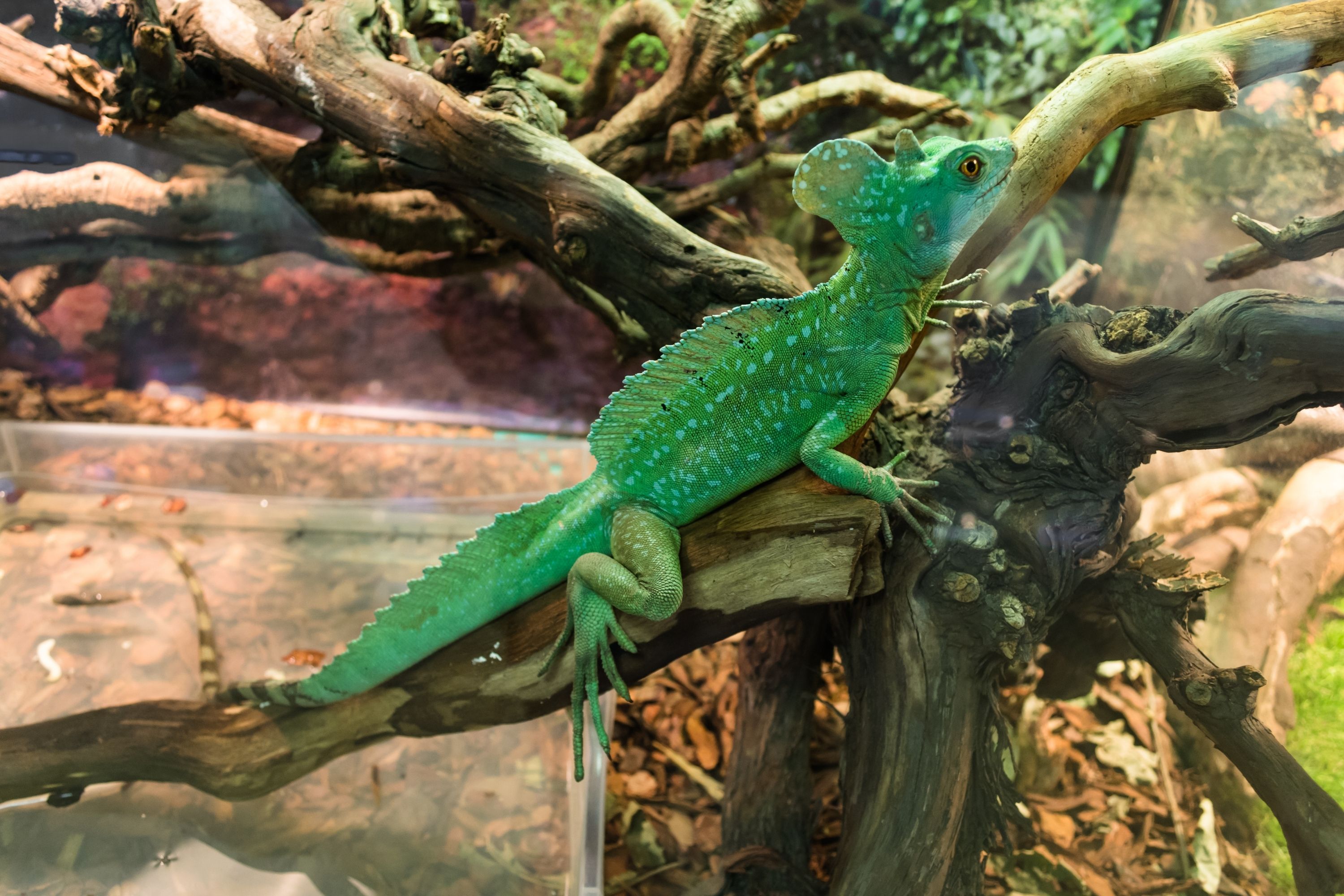Common basilisk
(Basiliscus basiliscus)

Description
The common basilisk (Basiliscus basiliscus) is a species of lizard in the family Corytophanidae. The species is endemic to Central America and South America, where it is found near rivers and streams in rainforests. It is also known as the Jesus Christ lizard, Jesus lizard, South American Jesus lizard, or legato de Jesus Cristo for its ability to run on the surface of water. The common basilisk can be distinguished from similar species within its range by its large size and the high fin-like crest along its back. Most common basilisks are brown and cream in color. Males also have high crests on the head and tail. Both sexes are brown to olive, and have a white, cream, or yellow stripe on the upper lip and a second stripe along either side of the body; these stripes have higher contrast in juveniles and fade as the lizards age. Hatchlings weigh a mere 2 grams (0.071 oz) and are 38 to 43 mm (1.5 to 1.7 in) long. Adults can grow to a total length (including tail) of 76 cm (2.5 feet). Females are generally 135 to 194 g (4.8 to 6.8 oz), and weigh half as much as males. The tail comprises 70 to 75% of the total length: for example, a 70-cm-long (27.5-inch-long) common basilisk would have a 50-cm-long (19.5-inch-long) tail. The common basilisk has a large mouth with saw-like teeth on the inner sides of the jaw. While the common basilisk is most known for its ability to run on water, it is also an excellent climber and swimmer, and has been known to stay underwater for up to half an hour. The average lifespan is seven years in captivity; in the wild, it tends to be less because of predators.
Taxonomic tree:







